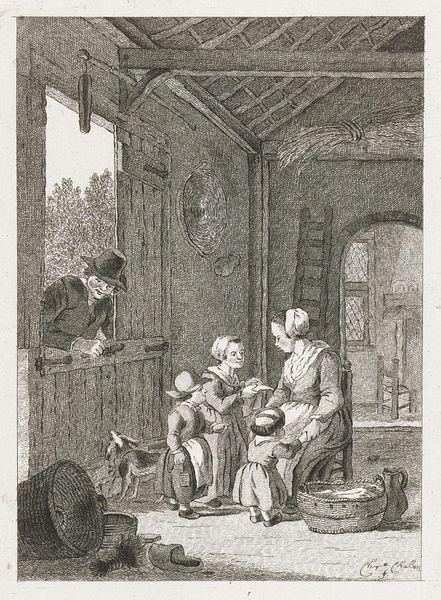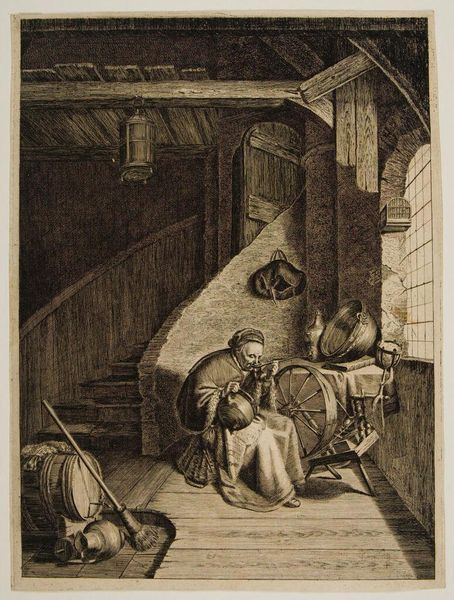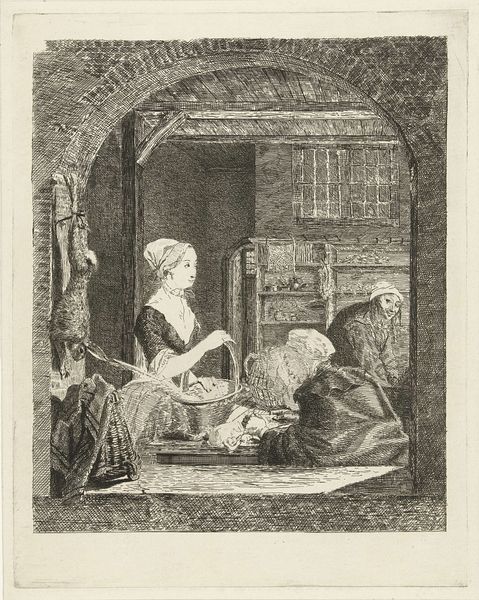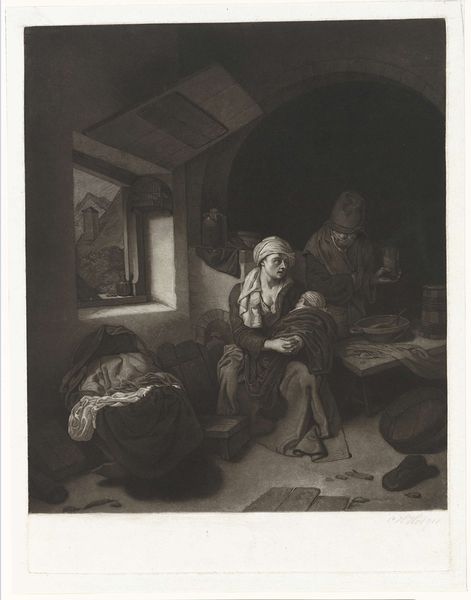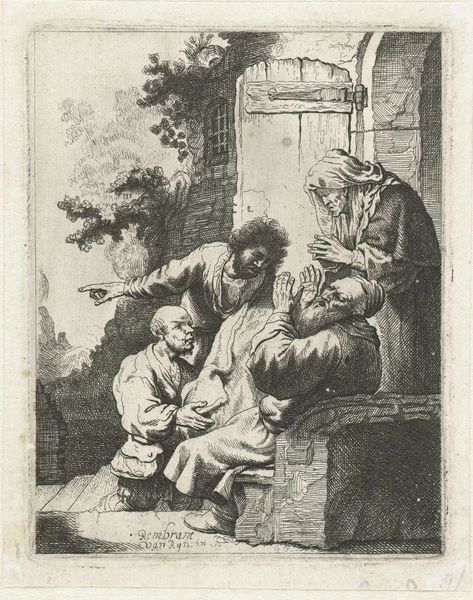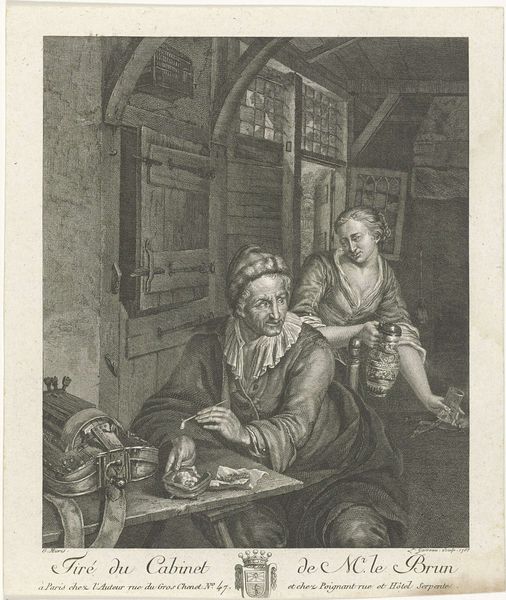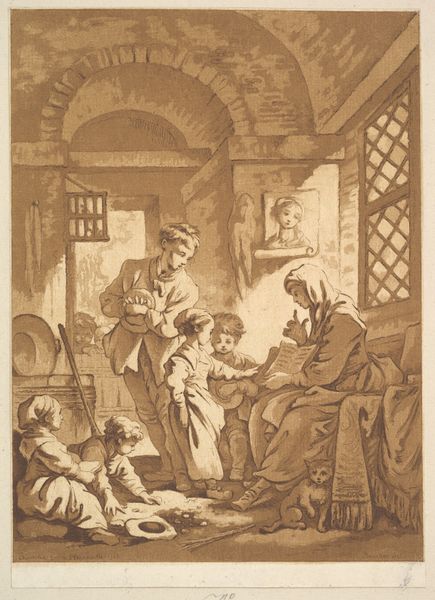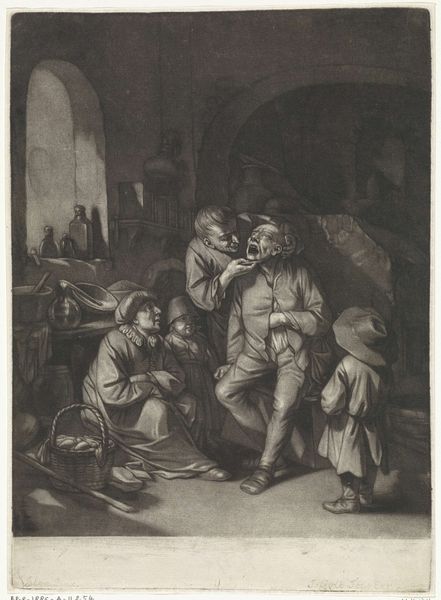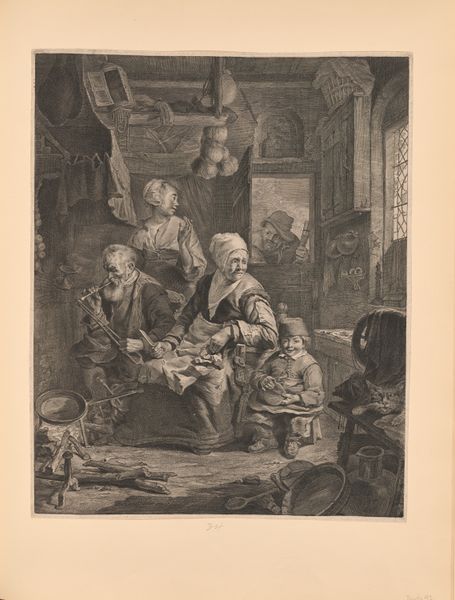
drawing, pencil
#
drawing
#
imaginative character sketch
#
light pencil work
#
baroque
#
pencil sketch
#
sketch book
#
landscape
#
figuration
#
personal sketchbook
#
idea generation sketch
#
sketchwork
#
pen-ink sketch
#
pencil
#
sketchbook drawing
#
genre-painting
#
sketchbook art
Dimensions: height 284 mm, width 226 mm
Copyright: Rijks Museum: Open Domain
Editor: So, here we have Moses ter Borch’s "Tobit en Anna," a pencil drawing from 1661, held at the Rijksmuseum. I'm struck by the domesticity, but also this incredible feeling of stillness... almost like holding your breath in a quiet room. What resonates with you when you look at it? Curator: It's the quiet intimacy, isn’t it? Ter Borch captures this aged couple not in grand action, but in a moment of shared space, shared silence. Notice the window—it's almost a character itself, framing the scene, but also a kind of porthole. What do you suppose they're thinking? Are they reliving some moment of their history together? Editor: The light really draws the eye. It's interesting that you call it a porthole. It does add to the dreamlike state. What do you think of their expressions, or lack thereof? Curator: Exactly, a dream where clarity isn’t quite necessary. Their faces, softly rendered, hold a wealth of unspoken narrative. You see it in the gentle tilt of Tobit's head, perhaps a sign of listening, of considering something Anna has said. Maybe they are contemplating what they'll have for dinner, I like that human connection. And what is she doing? Does that seem to be wool spinning? Editor: Yes! You know, I was so caught up in the stillness, I didn't fully notice the spinning. That definitely brings the whole image back down to earth somehow. I really get the sense that, beyond any grand narrative, he’s captured something wonderfully… ordinary, yet profound. Curator: It’s a powerful statement. Sometimes the grandest stories are found in the hushed corners of ordinary lives. Perhaps ter Borch is nudging us to find the beauty in the mundane. Editor: I love that thought! Seeing the profound in the ordinary – definitely something I’ll carry with me. Curator: Absolutely, art whispers when you take the time to listen.
Comments
No comments
Be the first to comment and join the conversation on the ultimate creative platform.

